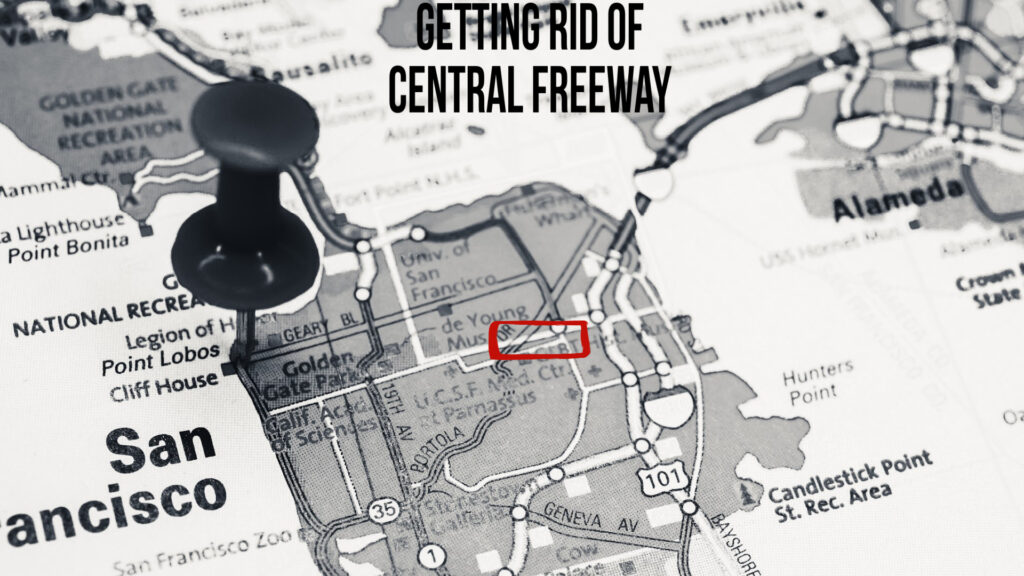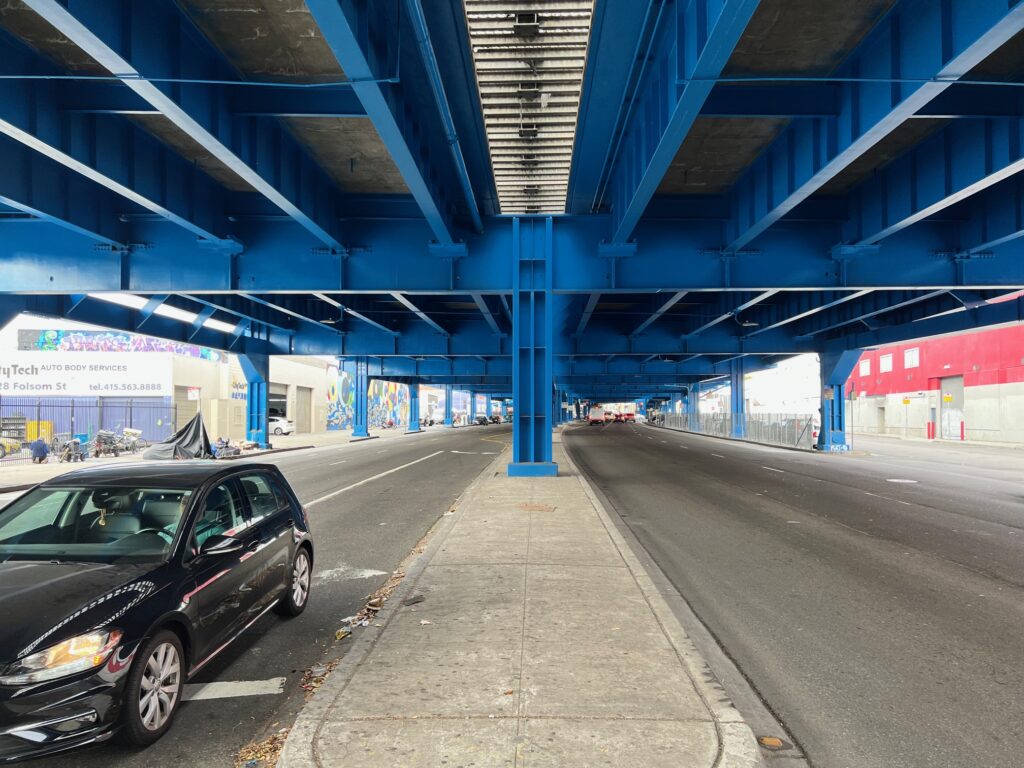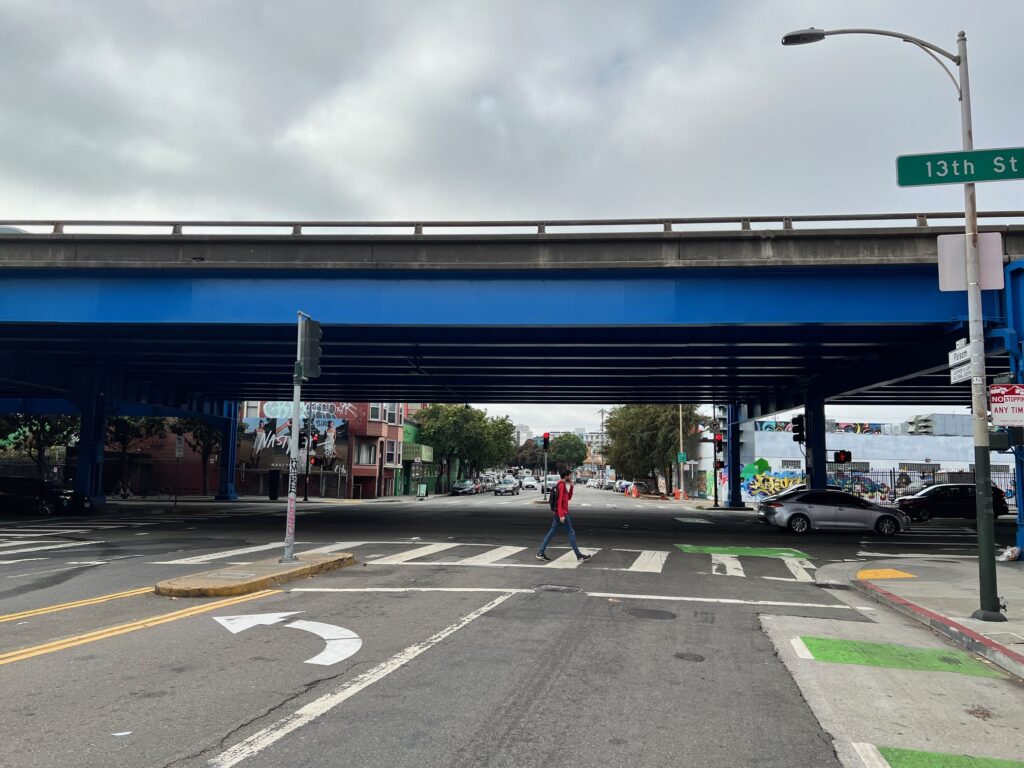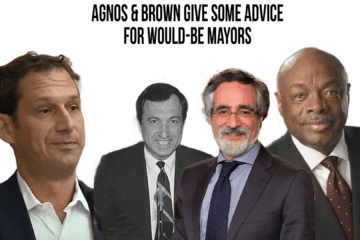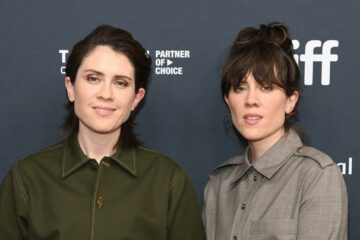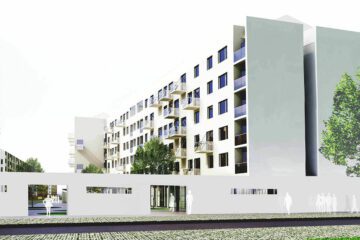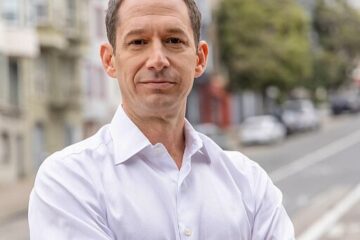Could this SF Freeway Become a Park with Housing and Transit?
San Francisco isn’t all that big. We are a 7×7 bear paw on the end of a long peninsula in California. Even the island we’ve made from scratch has taken decades to transform into a viable housing site. Enter Vision Blvd
Where Can We Build?
We’re running out of places to build. Vision Blvd is a campaign to transform the old Central Freeway into a park with more housing and more public transit. The old Central Freeway runs from Market St on the West and San Bruno on the East. It’s roughly about a mile long.
Daniel Owens is the founder of Vision Blvd, a volunteer organization. He says if we remove the Central Freeway, we can “replace it with several benefits, like affordable housing, new parks, and public greenspace.” He describes modernizing and making the street level boulevard multimodal so it’s much for pedestrians and cyclists. He even thinks we could squeeze a new transit line there.
Climate Change
Owens has thought about the project for a while. He says, “San Francisco’s only 7×7 miles. We’re limited in how we can affect climate change globally. But reducing car dependency in general is something we should strive for. We should do it as a way to be a model for other cities. And removing freeway structure is a big part of that.”
Owens ditched his car in late 2006 and considers himself a strong advocate for high quality public transit. But he says, “I realize that many people need to drive for their jobs. I don’t want to come off as an anti-car campaign. That’s not really what we’re doing. We want to create opportunities to expand public transit so people aren’t so reliant on cars.”
In particular, Owens describes encountering the freeway as an unpleasant experience. He’s always lived near it, but he points out, “I think it deters foot traffic to nearby businesses. Also, the pollution levels are really high around that freeway so I’m concerned about vulnerable populations getting exposed to toxic roadway particulates like tire dust, car exhaust, all those things. I don’t think a freeway should be carving into urban areas, so I finally decided to do something.”
Freeway History
Oakland and San Francisco’s historically Black Fillmore neighborhood along with Japantown have all recently won funding to reconnect communities separated by racist policies including freeways built to tear neighborhoods apart.
No Central Freeway, Yes Affordable Housing?
Owens describes removing the freeway as a housing project. He says, “I know that San Francisco needs more housing. We have had a shortage for decades and that’s a big reason why housing costs are out of reach for most people.” But he thinks in particular this place would be good for affordable, aka Below Market Rate, housing.
For Owens, affordable housing is personal. “I’m a public school teacher,” he explains. “I want to be able to afford a house here like anywhere else in the country.” Right now teachers struggle to find housing that they can afford on their salaries.
Setting The Bar
But Vision Blvd is also an opportunity for The City to set the bar for others.
One of the lofty ideas that Owens has is daylighting. Right underneath the site flows the old Mission Creek. He says, “It sounds dreamy, like you want to expose this hidden creek? But I’ve talked to many experts and they say it’s been done in other parts of the world.” Then it wouldn’t just be about adding green space, which the neighborhood solely needs. Owens says it’ll be a unique opportunity for blue space.
There are challenges ahead that will require a hydrologist. “You might know that area is at a very low level,” Owens points out. “It might be one of the lowest in the whole city. During heavy rainstorms, it often floods right there and there are weird issues around the sewage. I’m not an expert engineer around how these Public Works projects work but Mission Creek connects with the sewer box underneath the freeway and it ultimately results in a ton of flooding.” This negatively impacts businesses and homes.
The Work So Far
Owens’ work isn’t a pipe dream. He says he’s already had several meetings with everyone from CalTrans to SF Planning Department. He thinks Planning would “be the most important local agency that would collaborate [if] the campaign is successful and the city wants to spend resources on it.” But he doesn’t want to rush things.
“It takes time to build trust and create a plan,” he says. “They’re very busy so it’s going to take some time for us to hand over the project to local and state agencies but that’s ultimately the goal. I can’t do this forever. I want to advocate for this project and ultimately we’ll land on a proposal that The City can embrace and work with.” But he feels optimistic and hopeful.
Will Voters Decide on Central Freeway’s Fate?
When asked if the project would ever go in front of voters, Owens pauses. “I think about this all the time. I want this to be something. I don’t want this project to become politicized. I really want to work hard to get community input before or if it ever becomes some sort of ballot measure. Having community events where people can check it out… That’s the way to go.”
Owens thinks this will enable people to get to know the area and its potential. “Slow and steady wins the race. I don’t want to rush a ballot measure. I don’t know if I have the emotional and psychological bandwidth for that. I have a full time job as a teacher. I really enjoy volunteering and getting in touch with the community to get their input.” He explains that “if there was an understanding citywide that this was the right thing to do,” this project could work.
Owens will hear in the coming months about whether the organization has won a grant to help conduct further hydrology and community engagement studies. “It can’t be done impulsively or rushed.” He says that through the application process they received a ton of letters of support.
Small Business Support
But it doesn’t stop there. Owens, a son of a small business owner, wants to see a community fund to make sure the businesses there don’t suffer during demolition or construction. “I would love to work with city agencies and nonprofits to build a community fund. I don’t want those small businesses to be adversely affected. The demolition of the freeway might take a while.”
Things in San Francisco take a long time, so we’ll see what happens. But it doesn’t hurt to dream about what those big blue pillars could be for the next generation.
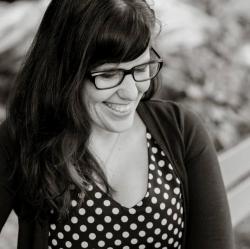
Howdy! My name is Katy Atchison and I'm an Associate Editor for Broke-Ass Stuart.
I want to take the time to say thank you for supporting independent news media by reading BrokeAssstuart.com. Supporting independent news sources like Broke-Ass Stuart is vital to supporting our community because it amplifies the voices of a wide variety of diverse opinions. You also help support small businesses and local artists by sharing stories from Broke-Ass Stuart.
Because you're one of our supporters, I wanted to send over a pro-tip.
Our bi-weekly newsletter is a great way to get round ups of Broke-Ass Stuart stories, learn about new businesses in The Bay Area, find out about fun local events and be first in line for giveaways.
If you’d like to get our newsletter, signup right here, it takes 5 seconds.


